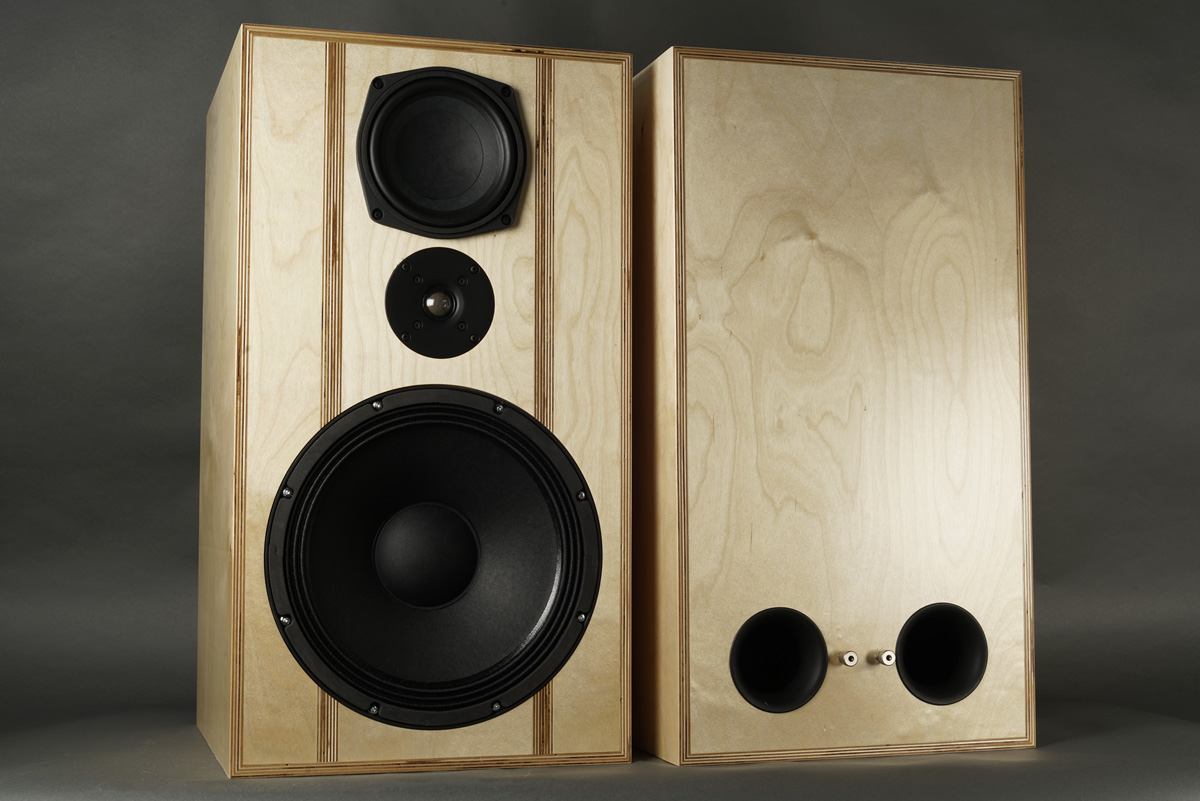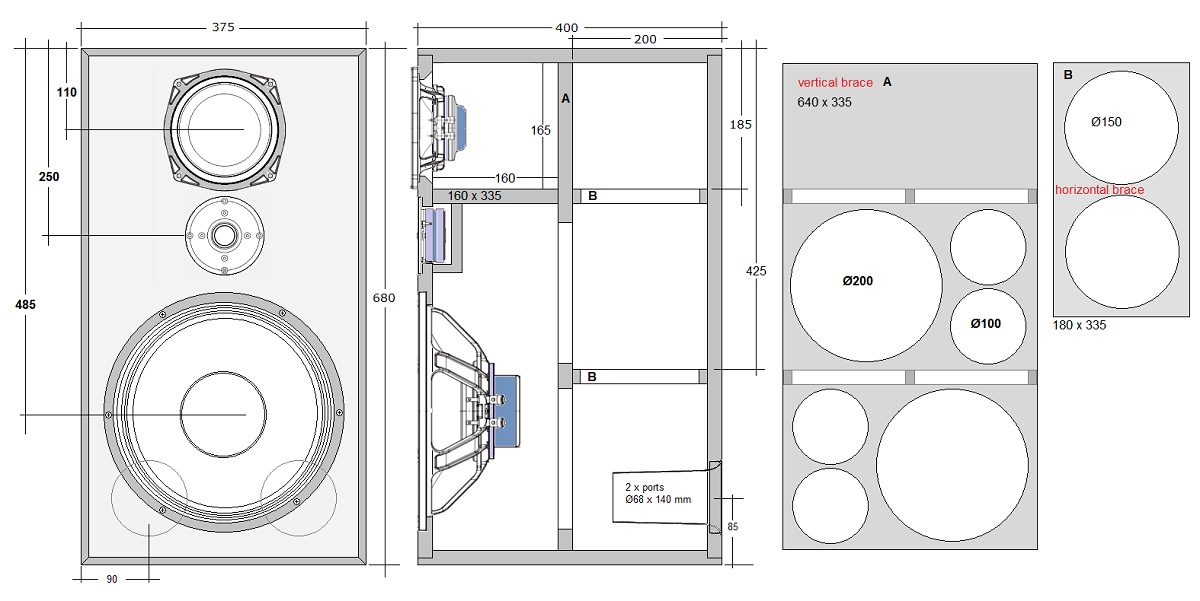Faital 3WC-12
Copyright 2022 © Troels Gravesen
Go to on this page:
DRIVERS
CROSSOVER
CABINET
MEASUREMENTS
SPEAKER-KIT Workshop
images
CROSSOVER LAYOUT BE-version FAITAL-3WC-12 builders
Searching the websites of PA driver manufacturers often reveals drivers
more than suitable for hifi application. BMS, 18 Sound, Faital, B&C,
Eminence, RCF, Ciare, etc., all have drivers suitable for hifi. I have
become particularly fond of drivers from 18 Sound, BMS and Faital.
Going
through the 5-6" drivers from Faital, my eyes fell on the 6RS140 and it
looked like an interesting midrange driver with a quite smooth frequency
response - and I bought a pair.
The Faital 12PR320 had been announced
long time ago, but it took some time before it started appearing on
dealer's websites. This 12" driver also looked like having a very smooth
frequency response - and I bought a pair.
These drivers will
make a fine couple for the basics of a 3-way classic speaker delivering
high efficiency, an easy crossover and an overall smooth response. But
be aware, the 12PR320 is not a subwoofer. If you want the bottom octave
from 20-40 Hz, add a subwoofer.
For tweeter there is an
abundant number of options and after testing a few I decided on a long
timer good friend, the ScanSpeak D2608/913000. This tweeter has proven
great value for money and in many ways as good as tweeters
costing 3 times as much.
Setting up the speakers for the first time I wasn't disappointed.
Powerful bass and a smooth midrange and treble. Based on appearance this speaker may very
well resemble a Seventies boom-box, but due to much better cabinet
materials and construction - and not least a proper crossover design -
it's also more than suited to other musical genres than rock/pop, being classical
or jazz.
Given its ~93 dB sensitivity and smooth impedance it's an easy load for
almost any amplifier and my 32 watts tube amp can run it to thunderous
levels. On paper the 12" bass driver may not go deep, but as I have
often pointed out, I'd like to see you choose between a 12" going to 50
Hz and a 6" doing 35 Hz. Size matters. For any speaker construction we
have to balance efficiency, size and low-end extension. If we want high
efficiency and deep bass, the price to pay is size - and it's going to
be huge! Small size and deep bass equals low efficiency and usually also
limited dynamics.
Replacing my EAR-861 with my Jungson 80 watts solid state.... My
Goodness, this speaker can rock! Like I've heard from
The Loudspeaker driven by a Gryphon monster amp, size matters here
too. High-wattage amps can do stuff, even for high-efficiency speakers.

This is the second time I've used a PA midrange driver - and like the 18
Sound 10NMBA520 used in the
The Loudspeaker, this 6" Faital 6Rs140 surprises me, it surprises me
a lot! Given its 93 dB sensitivity and smooth frequency response it has
a dramatic impact on the final performance of this speaker. Good bass
drivers we can get from a lot of manufacturers, although the 12" range
is limited for domestic use due to high Fs, but from 15" and 18" drivers
there are multiple choices. And really good tweeters are in abundance
these days. The 6RS140 has excellent dispersion, which creates a strong
presence, yet smooth on the ear due to low distortion. Should you fancy
percussion, look no further, this speaker has it. Rimshots are a
delight, fast as lightning and with that ultra short decay only
high-efficiency speakers can manage.
The image above display quite a range of genres and I have chosen these
examples deliberately as this Faital 3WC will handle whatever you feed
them equally well, being Mahler, Jimi Hendrix, Mahler's 4th - or
Cecilie Bartoli, the latter visiting our local Symphoni Hall in 2020 - and
I've got tickets! The last image is from a Yuko Mabuchi LP, actually
recommended by
Michael Fremer in his "100 Recommended All-Analog LP Reissues
Worth Owning". This trio plays some excellent jazz and I
don't hesitate to say this is the best small hall live recording I have
ever heard. The session was recorded with an AKG C24 microphone and the
45 rpm vinyl cut by Bernie Grundman - and the sound is nothing short of
stunning. The Faital renders the extraordinary dynamics spot on and the
double bass comes through with a dry dynamic quality from the
high-efficiency 12" bass.
Basics:
3-driver speaker
Dimensions: 37.5 x 40 x 68 cm, WxDxH.
System sensitivity: 93 dB/2.8V/1 meter.
Impedance: 8 Ohms, minimum 5 Ohms at 35 and 700 Hz.
Point of crossover: 500 and 2400 Hz, LR2 filter.
Power requirement: 20+ watts/channel.
Power handling: 300 watts. Please
also read:
http://www.troelsgravesen.dk/power-handling.htm,
and remember any burned driver is a misused driver.
http://www.troelsgravesen.dk/tips.htm
http://www.troelsgravesen.dk/tips.htm#CONSTRUCTION_OF_CROSSOVERS
http://www.troelsgravesen.dk/crossovers.htm
http://www.troelsgravesen.dk/LCR-RC.htm
http://www.troelsgravesen.dk/Inverted-Polarity.htm
http://www.troelsgravesen.dk/choices.htm
http://www.troelsgravesen.dk/power-handling.htm
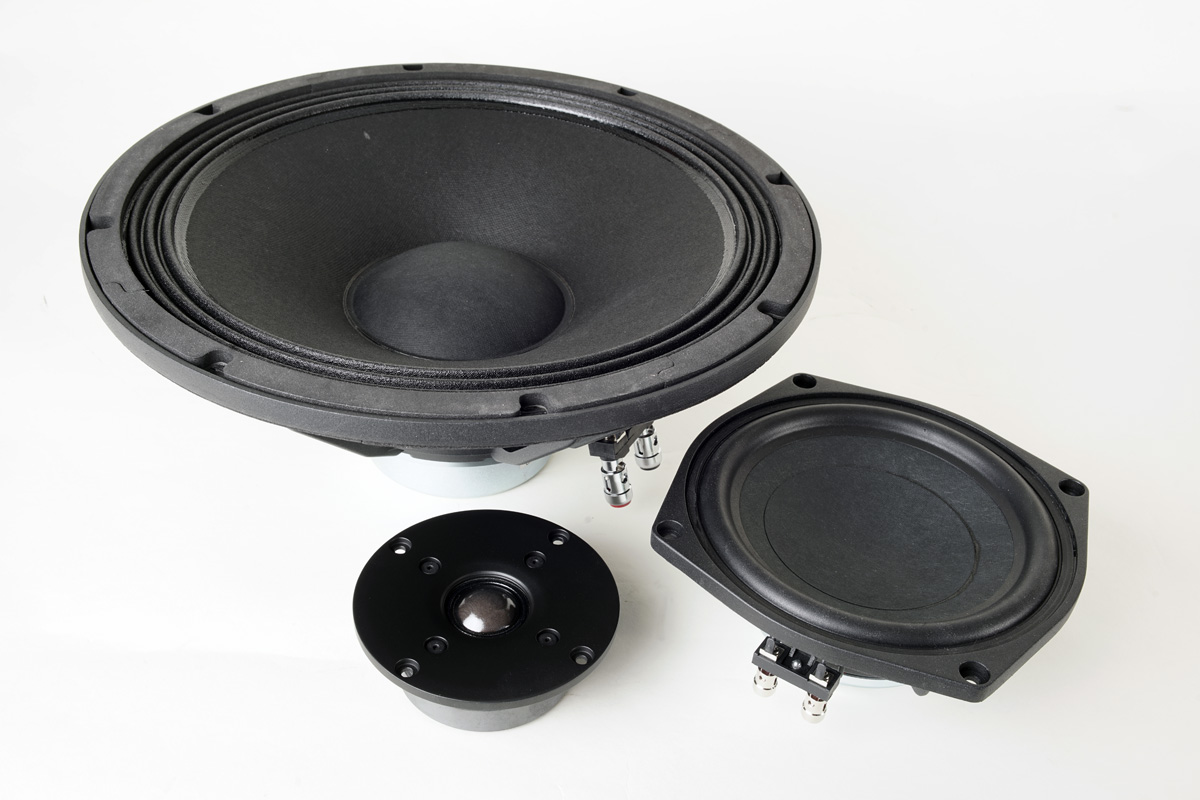
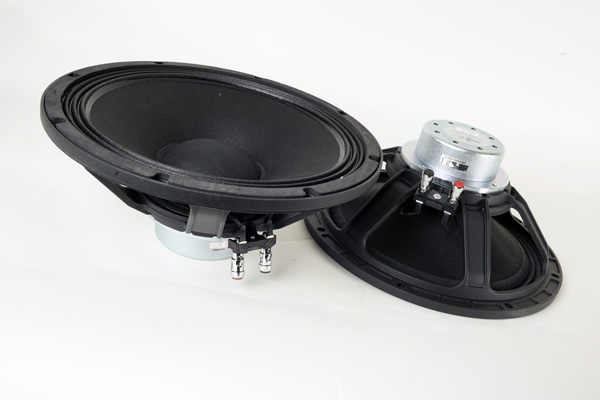
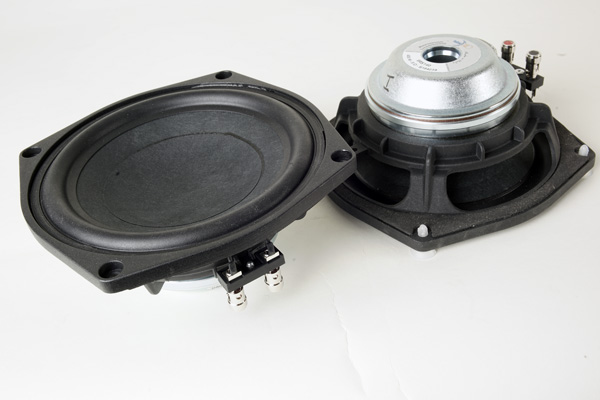
Faital 12PR320 and Faital 6RS140 midrange driver.
Click images to view large.
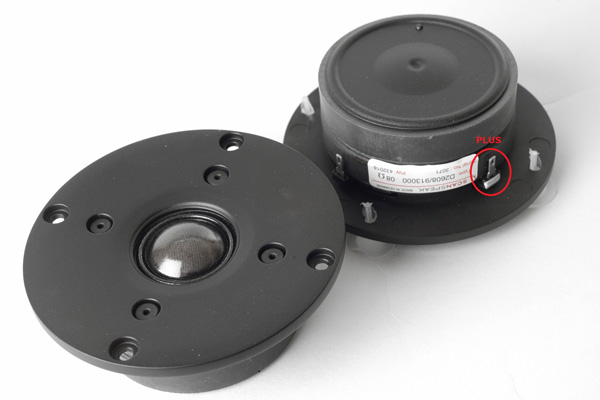
ScanSpeak D2608/913000 tweeter
Download specs here: Faital 12PR320 (8 Ohms) Faital 6RS140 (8 Ohms) ScanSpeak D2608/913000 (8 Ohms)
Read the excellent review by Dickason in AudioExpress.
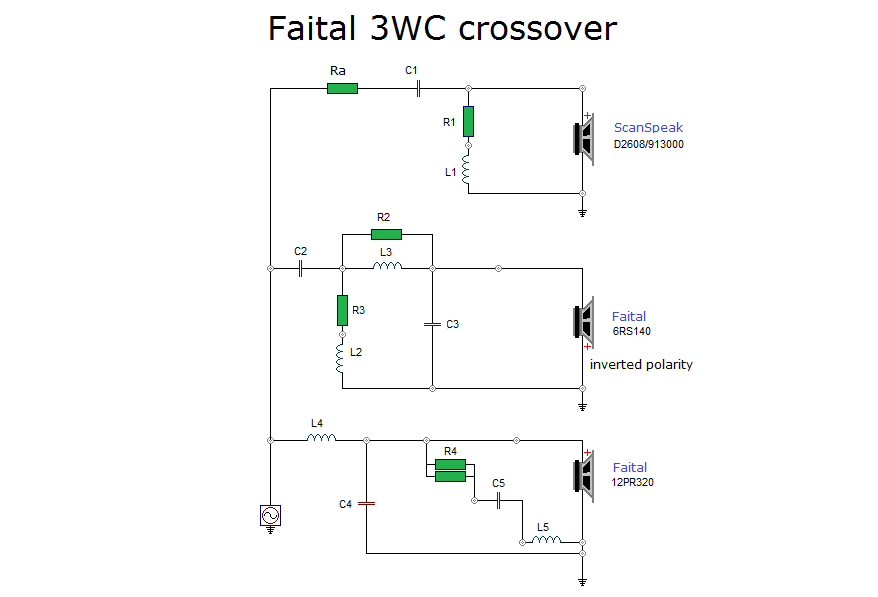
The crossover features a simple LR2 topology. The LCR circuit, R4/C5/L5, linearise the upper bass impedance peak and makes the low-pass section
work properly. In addition to this it provides an easy impedance profile
below 100 Hz.
Ra is the tweeter attenuation resistor and can be left out. I did so in
the beginning of crossover development, but later added Ra to lower
tweeter level some 0.75 dB. Not a lot, but take your pick and hear what
you like the best.
Cabs were made from 20 mm Baltic birch. Now, the old time 3-way classics
from 12+4-6+1 were typically made from veneered 3/4" chip board and with
no bracing al all - like the JBL L100 Century. We can do better, thus BB
and bracing - and not least proper damping. All dimensions based on
exactly 20 mm panel thickness. Adjust to actual conditions.
The reason for not flush mounting the midrange driver is that we're
supposed to listen at midrange height, thus with the midrange in front
of the tweeter and the tweeter flush-mounted, we have proper
time-alignment and we can make a simple LR2 filter.
The speaker should be placed on stands having a height that gives you
the midrange driver at listening height.
You can make a small cabinet around tweeter magnet - I actually forgot.
Not a big deal, but doesn't hurt. Also the use of bitumen pads is
optional. I didn't, but doesn't hurt. Add to purchasing list if you want
to.
Cabinet kits available from Ebel Holztechnik:
https://www.ebelholztechnik.de/galerien/index.php/category/358-faital_3wc_12
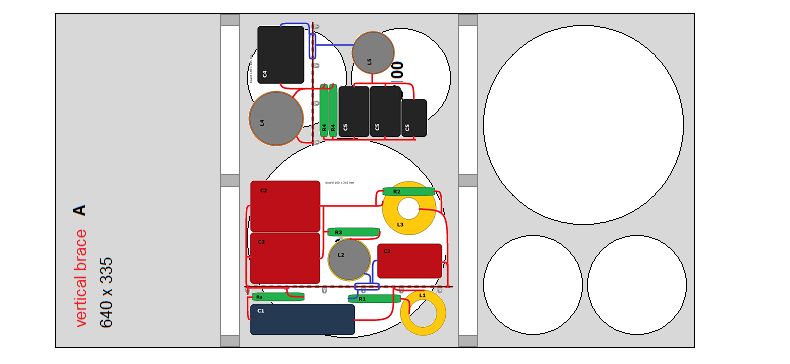
Placement of crossover on rear panel.
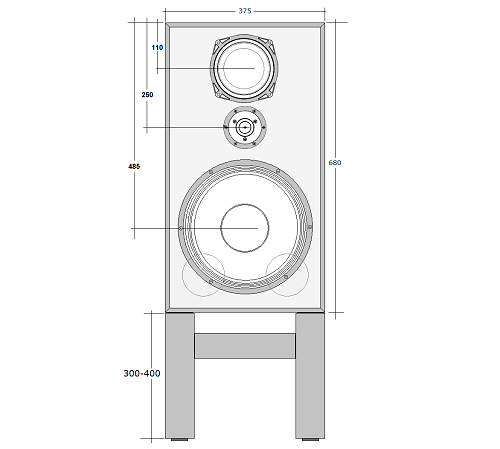
Click image to view large.
To my height I need stands of 30 cm height to have my ears at
midrange driver height when sitting in our sofa.

The reason for having the the midrange on top and not flush-mounted is
to have the midrange and dome time-aligned.
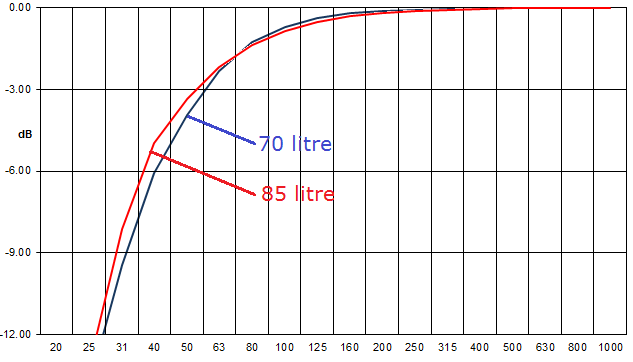
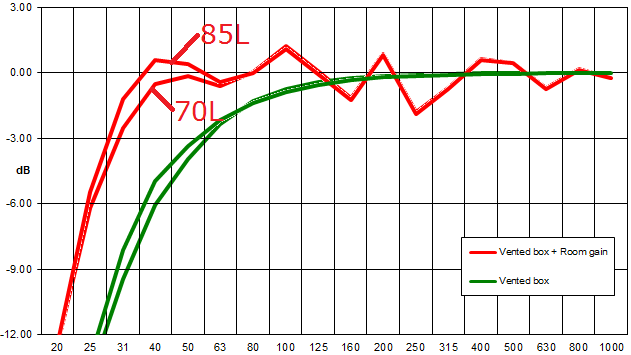
I've already had the question several times on increasing the bass
cabinet volume and here's what happens going from 70 to 85 litre (left).
Not a whole lot. Not sure you would even notice if you had them side by
side. On paper you move F3 down 4 Hz.
Add a room at it looks very different: Right image from having the bass
driver 50 cm from floor, 100 cm from front wall and 180 cm from side
walls. I you still want to have a few extra Hz, extend the cabinet below
bass driver and don't change anything else. But again, this is not a
subwoofer.
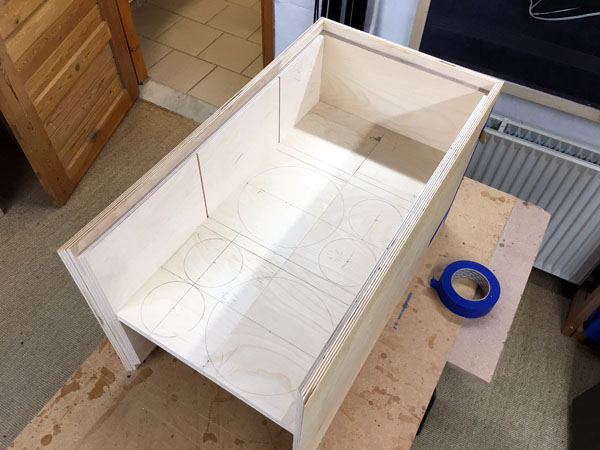
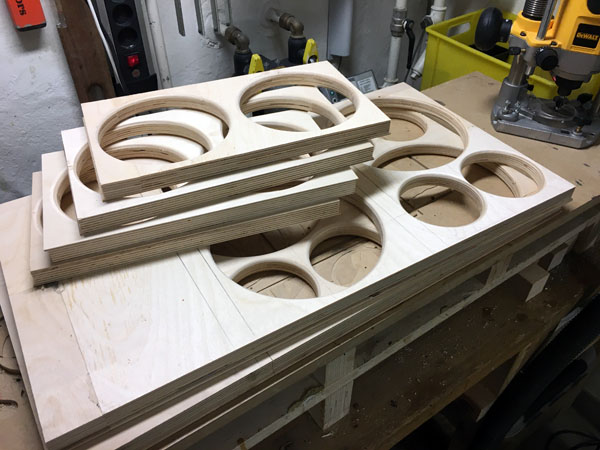
Left: Side and top/bottom panels in place and mid section brace in the
making.
Right: All braces ready for assembly. Braces made from cut-offs. Didn't
have much waste this time.
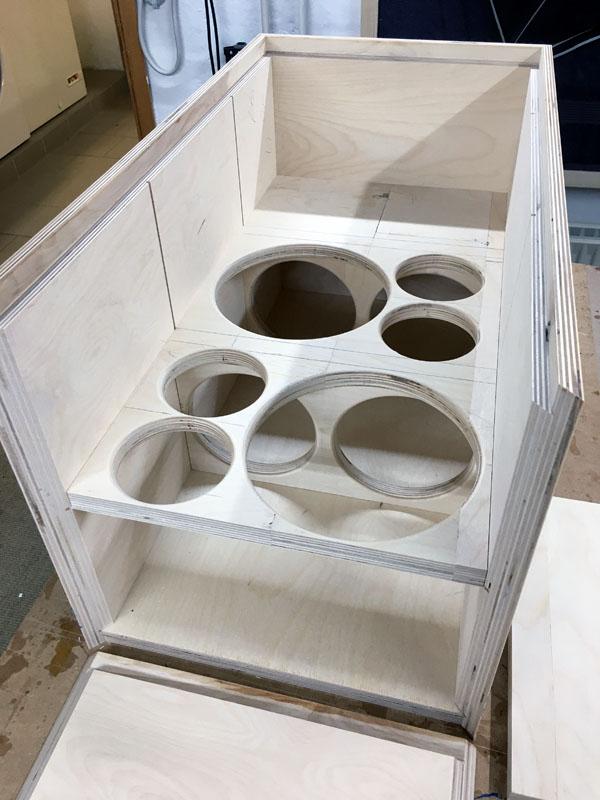
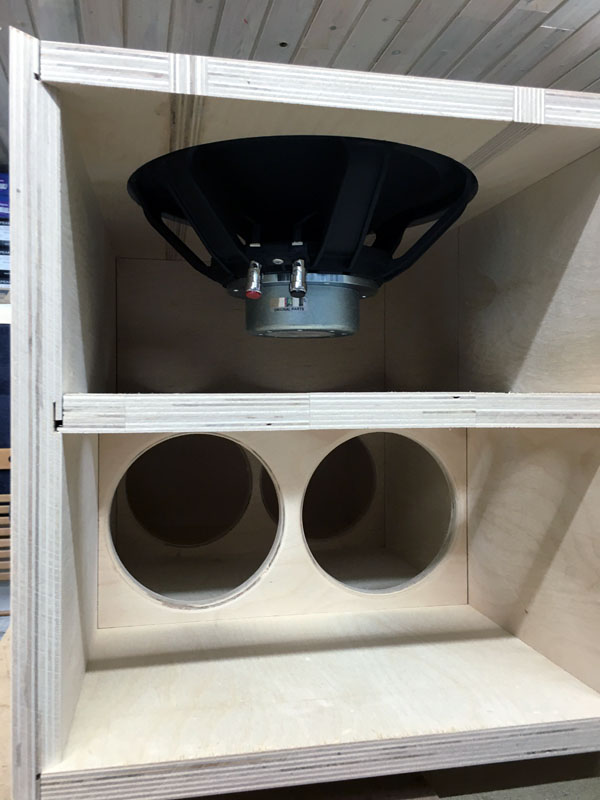
Checking all braces. For once all my cuts would fit either cabinet.
Making simple rectangular boxes is easy.
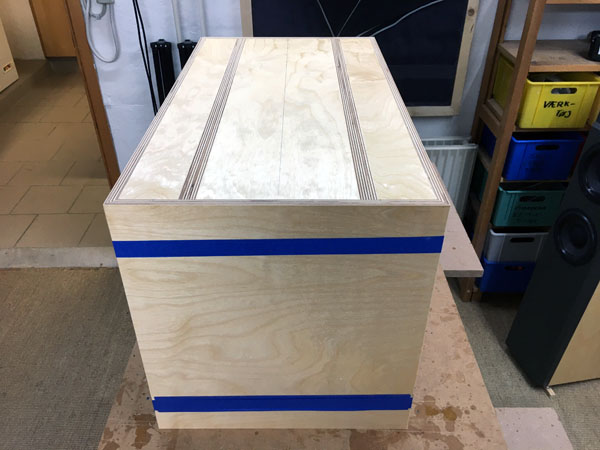
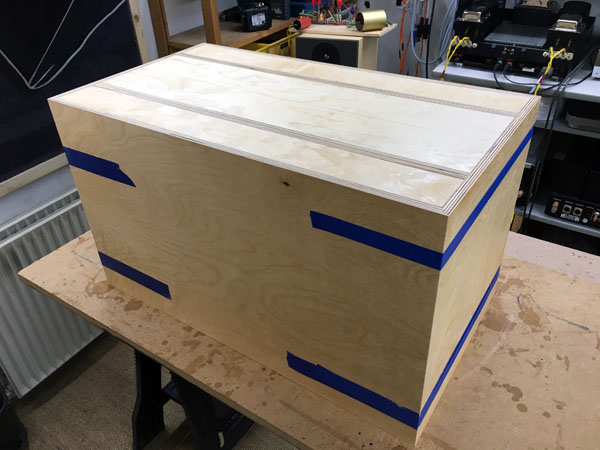
All parts together. Ready for routing for drivers and ports. The strips
on the front panels are purely ornamental.
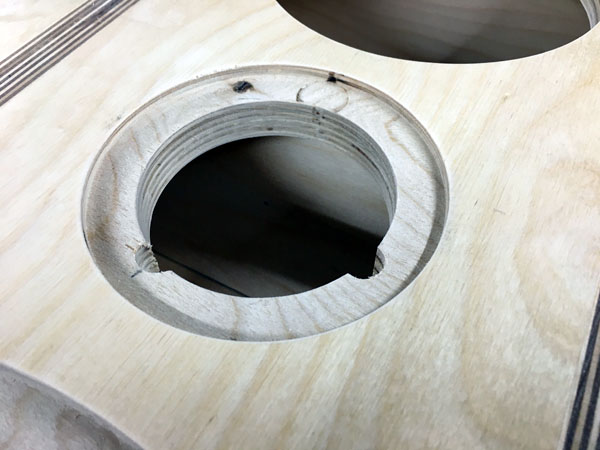
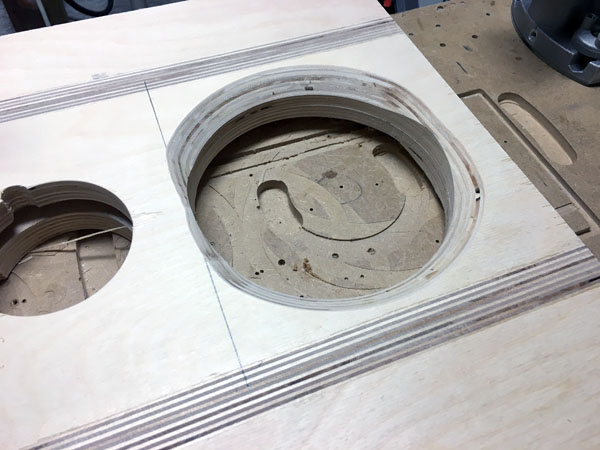
Routing for drivers. Remember to chamfer driver hole for midrange. No
need for the bass driver due to size.
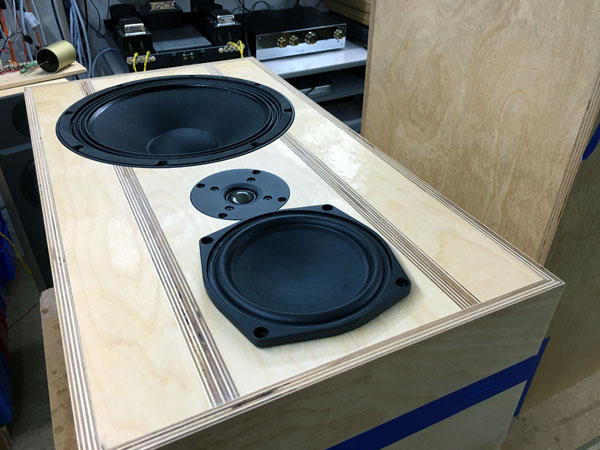
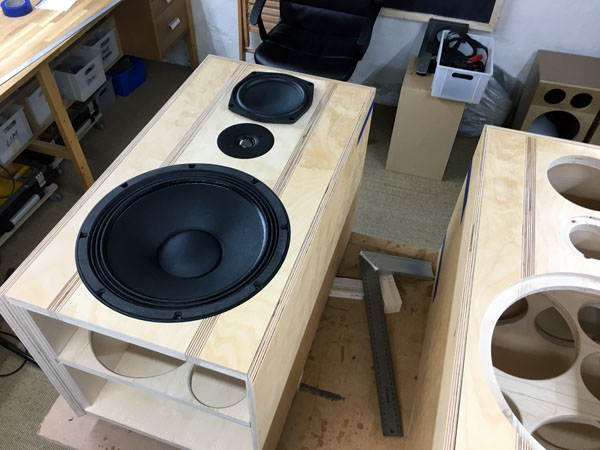
About ready for gluing the entire cabinet. But, add felt damping before
gluing!
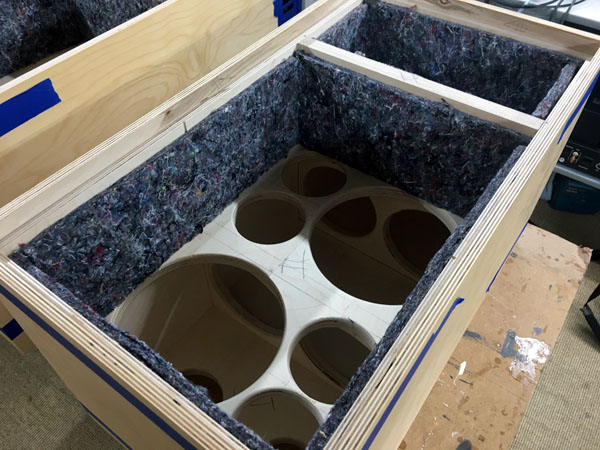
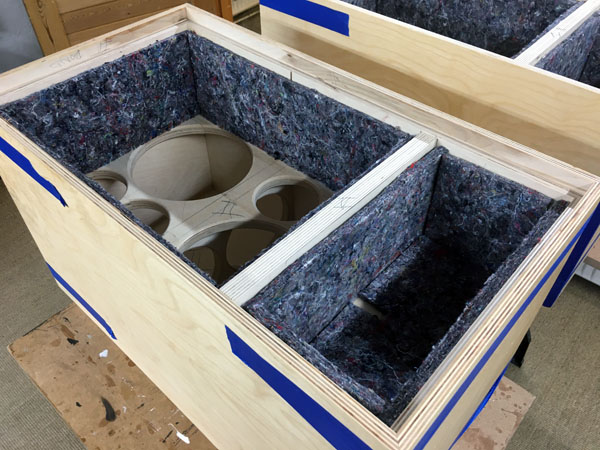
Felt damping in front part of cabinet. Drill hole in mid cab for wires
and seal with
Superfix.
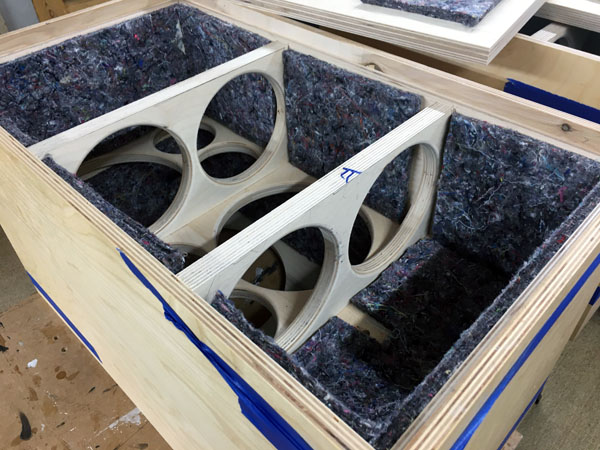
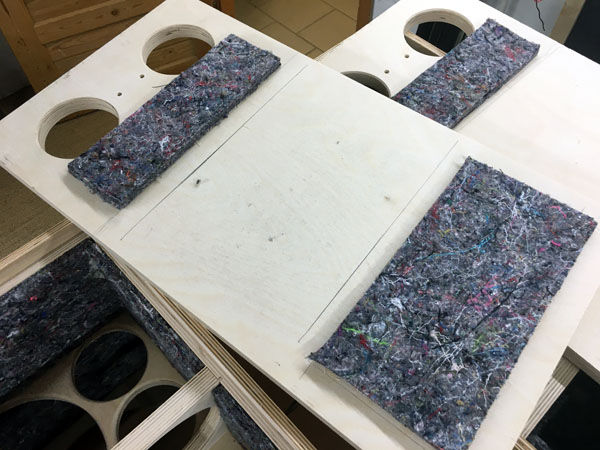
Felt damping in rear part of cabinet - and rear panel.
The middle
section of the rear panel is for mounting the crossover and will be
covered with acoustilux.
The midrange cabinet is filled with 100 grams of combed wool.
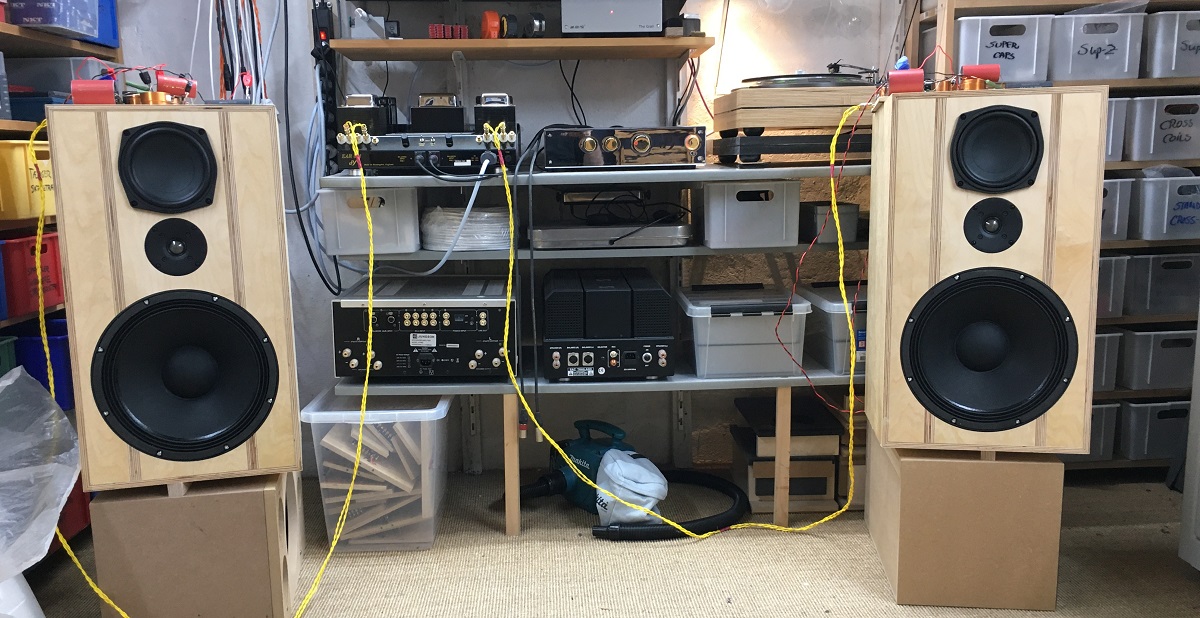
Speakers in workshop during crossover development.
Runs smoothly, dynamic and transparent from my EAR-861 tube amp, but
connect the speakers to some 80 solid state watts like my Jungson - My
Goodness, they rock! And they can run insanely loud without distortion.
This 6RS140 is some great midrange driver.
The speakers need some stands of around 30 cm/12" height.
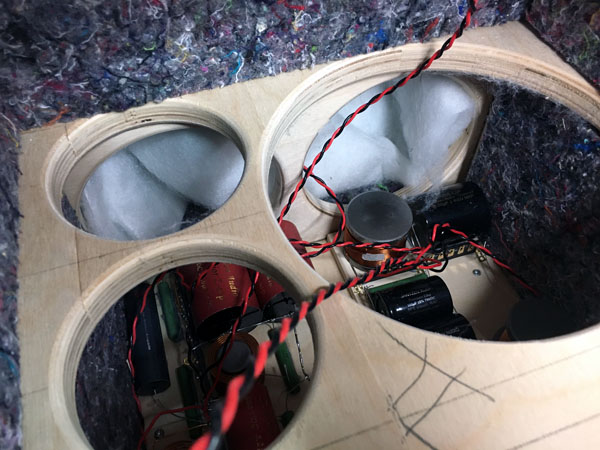
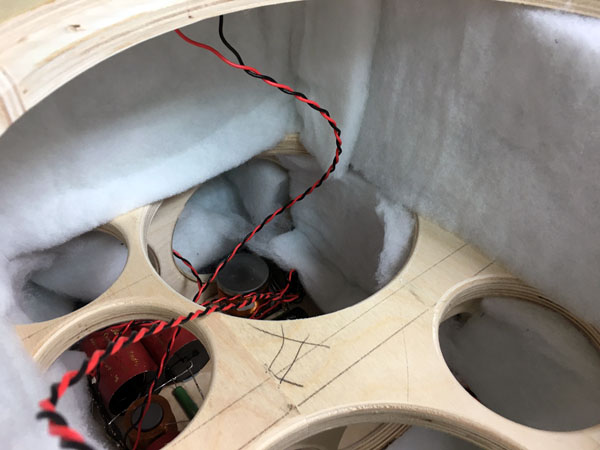
Cut a piece of 50 x 50 cm acoustilux and stuff the section behind the
midrange driver like seen on left image.
Clad all internal panels with acoustilux. Fasten with dots of vinyl
glue.
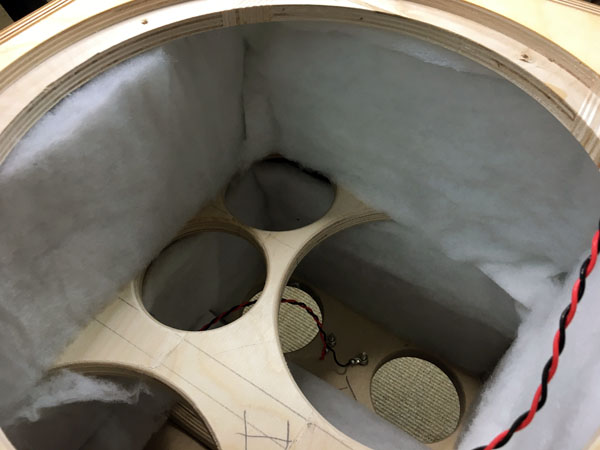
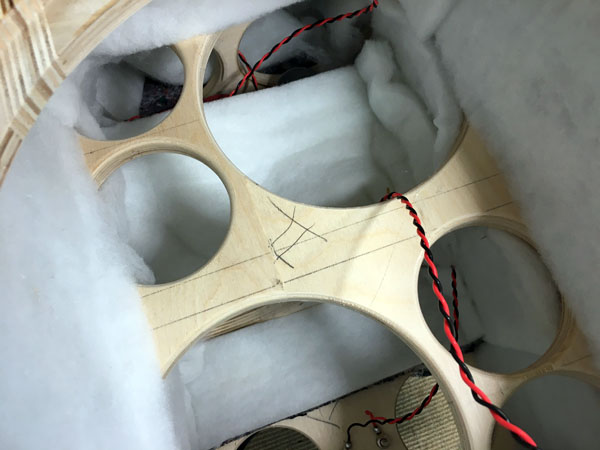
Finally add a double piece of acoustilux on top of crossover.
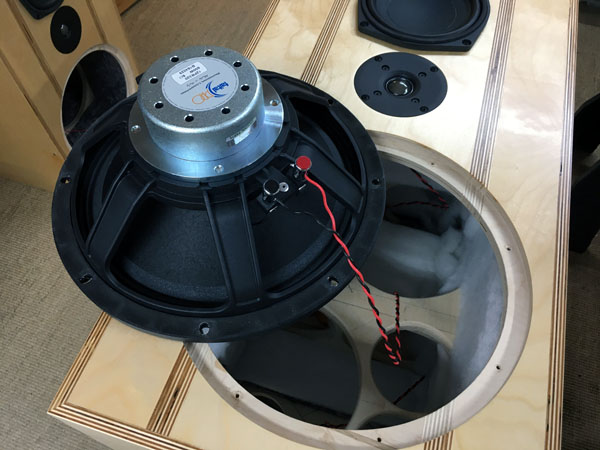
Mount the bass driver and ports - and we're airborn.
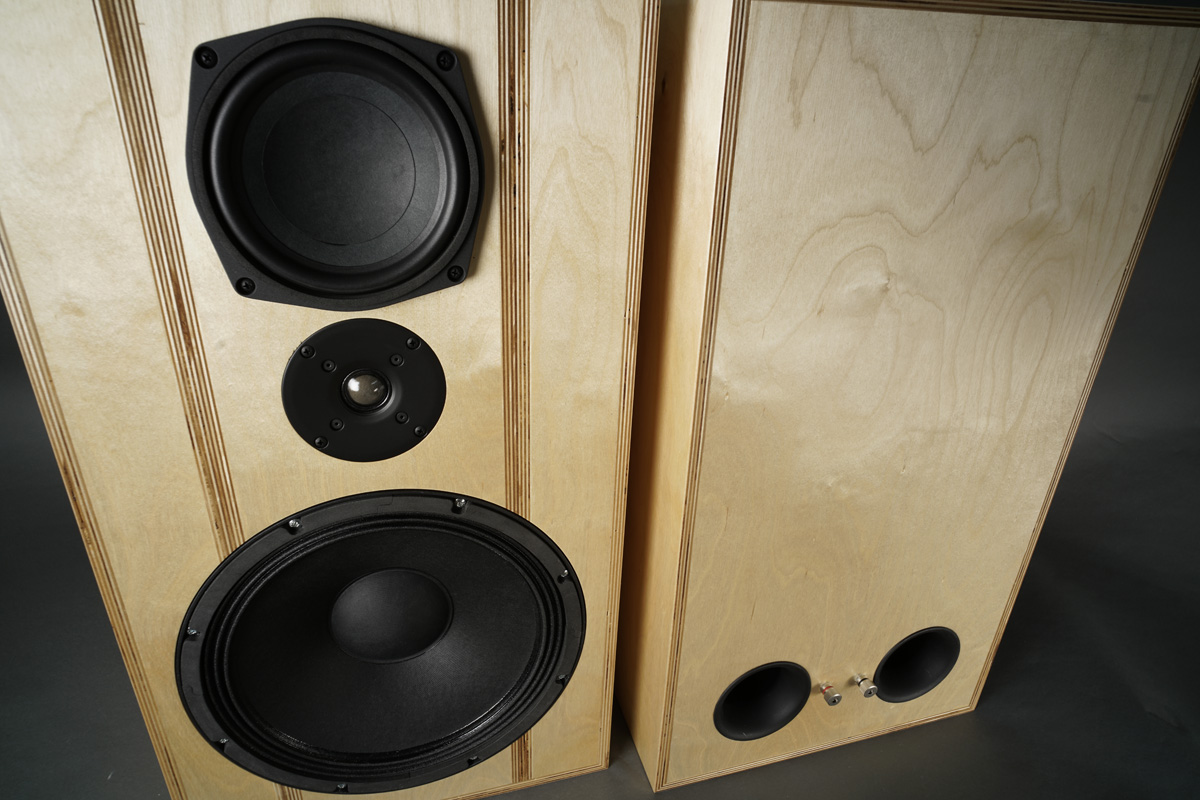
A few comments on
MEASUREMENTS before you start interpreting the readings below.
First of all, if we think measurements will
tell us how a speaker sounds, we're wrong. The perception of sound is
way too subjective to be reflected in any measurements we can perform. A
loudspeaker system is meant to give us a satisfying idea of an acoustic
event and for some people a pair of 5 USD ear-plugs are enough, others
spend 200 kUSD on a truly full-range pair of speakers - and the latter
may not be happier than the former.
Measurements may give us an idea of tonal balance of a system, i.e. too
much or too little energy in certain areas, although dispersion
characteristics play a vital role here. A two-way 7+1 and a three-way
7+4+1 may display similar horizontal dispersion, yet sound very
different. Measurements may tell us about bass extension if far-field
measurements are merged with near-field measurements. In addition to
this, ports may contribute to bass extension. Most of we diy'ers do not
have access to an anechoic room for full-range measurements from
20-20000 Hz.
What cannot be seen is what kind of bass performance we get in a given
room. Bass performance is highly dependent on in-room placement of your
speaker and the same speaker can be boomy in one place and lean in
another. Actual SPL level at 1 meter distance and 2.8V input is useful
for en estimate of system sensitivity and combined with the impedance
profile may give an idea of how powerful an amplifier is needed to drive
the speaker to adequate levels.
What measurements do not tell is the very sound of the speaker unless
displaying serious linear distortion. The level of transparency, the
ability to resolve micro-details, the "speed" of the bass, etc., cannot
be derived from these data. Distortion measurements rarely tell much
unless seriously bad, and most modern drivers display low distortion
within their specified operating range.
Many people put way too much into these graphs and my comments here are
only meant as warning against over-interpretation. There are more to
good sound than what can be extracted from a few graphs. Every graph
needs interpretation in terms of what it means sonically and how it
impacts our choice of mating drivers, cabinet and crossover design.
What measurements certainly do not tell is the sonic signature of the
speaker, because speaker cones made from polypropylene, aluminum,
Kevlar, paper, glass fiber, carbon fiber, magnesium, ceramics or even
diamonds all have their way of adding spices to the stew. Nor do
measurements tell what impact the quality of the crossover components
add to the sound, from state of the art components to the cheapest of
coils and caps, they all measure the same if values are correct, yet
sound very different.
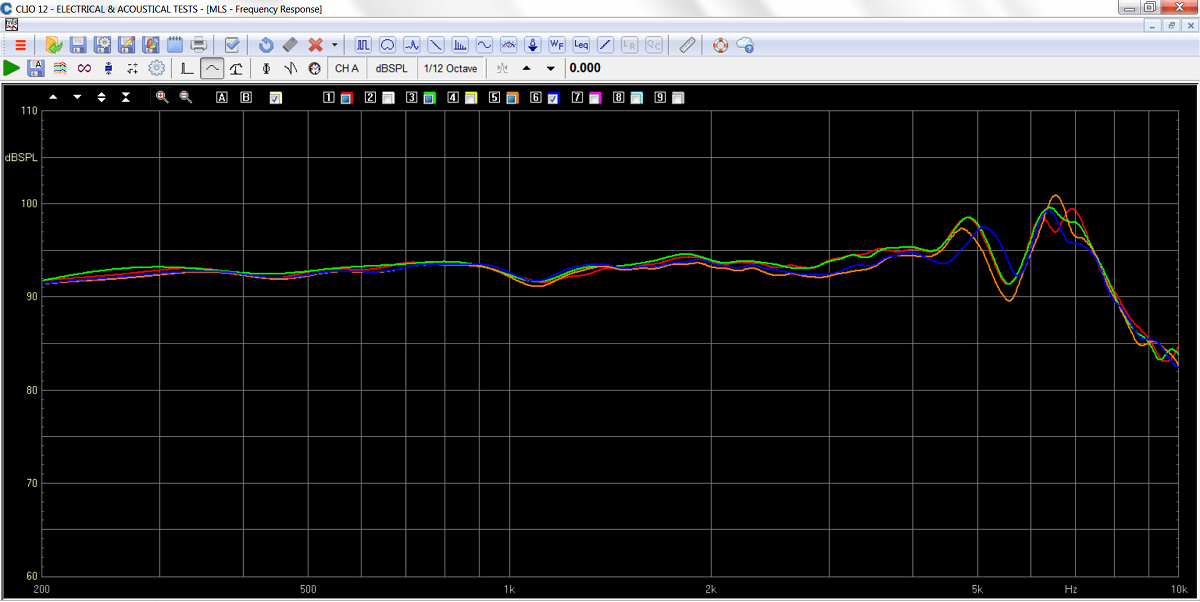
Measuring the 6RS140 I wasn't disappointed. As smooth as can be in the
midrange and all the way to 4.5 kHz.
Here four units on my 80 x 120 cm baffle.
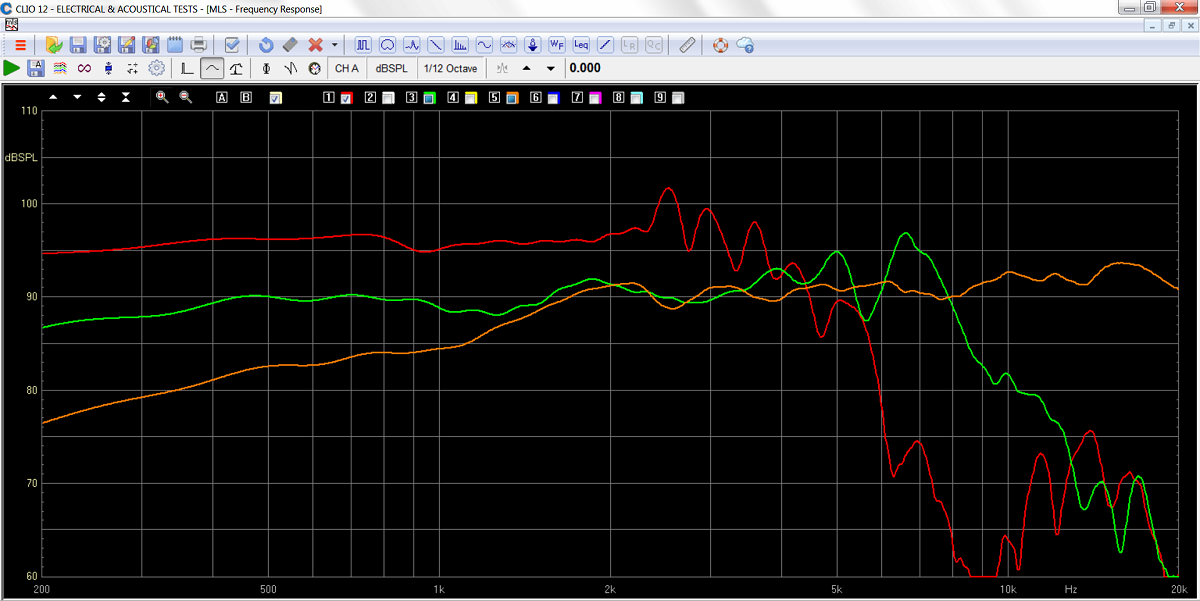
Above the SPL of all drivers on actual baffle without crossover.
This 12PR320 is indeed quite sensitive and can be tuned to around 93 dB
system sensitivity and still deliver solid bass.
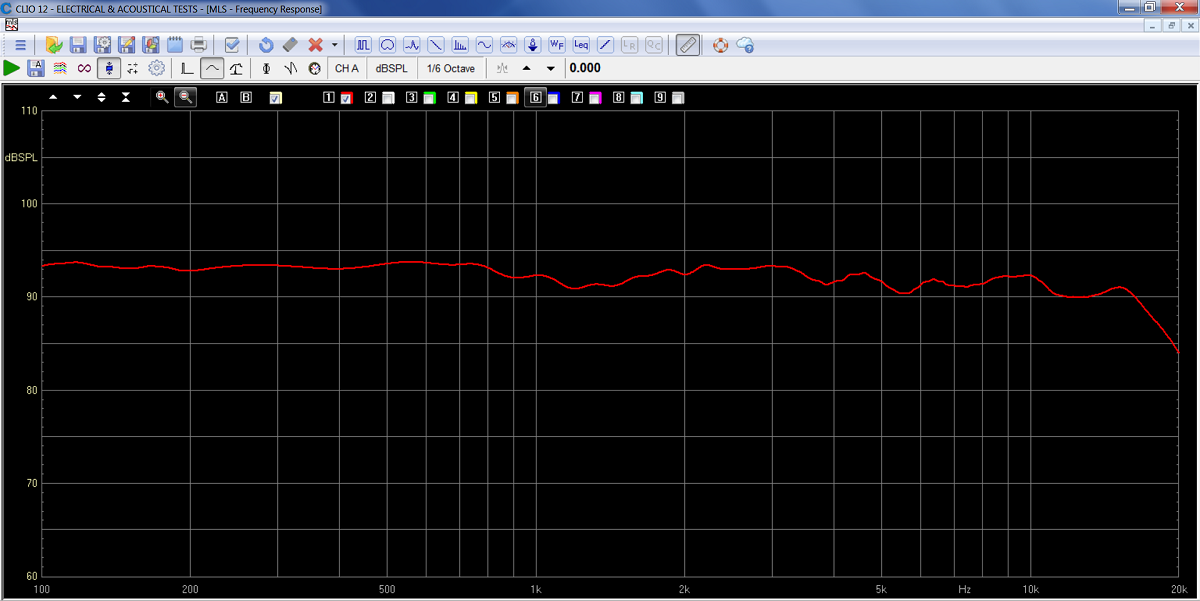
Frequency response at 2.8V/1 meter at 10° off-axis. Ra = 0 Ohm.
Frankly, it's not often you see some solid 93+ dB sensitivity like this
from 2.8 volts input.
5-10° off axis offers the most linear response and is pretty much
what a standard set-up would make when listening at e.g. 3-4 meter
distance with speakers slightly toed-in.
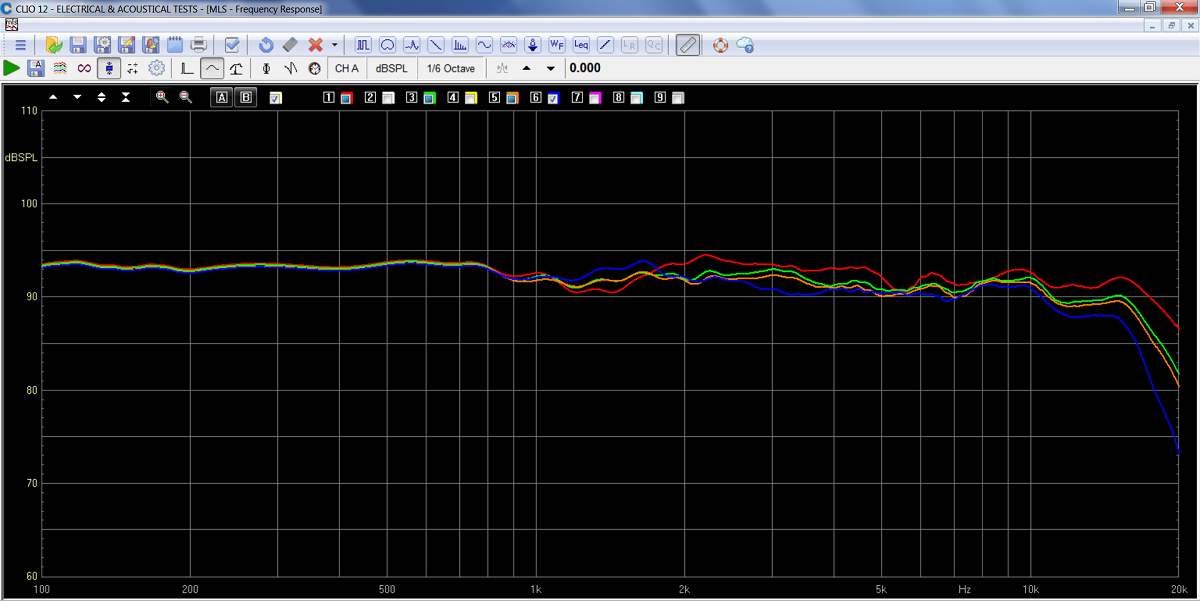
Horizontal dispersion measured at 0° (red), 10° (green), 20°
(orange) and 30° (blue) off-axis.
I'm
very pleased with that result. This 6RS140 has excellent dispersion.
Measurements done at 0.5 meter distance at midrange height.
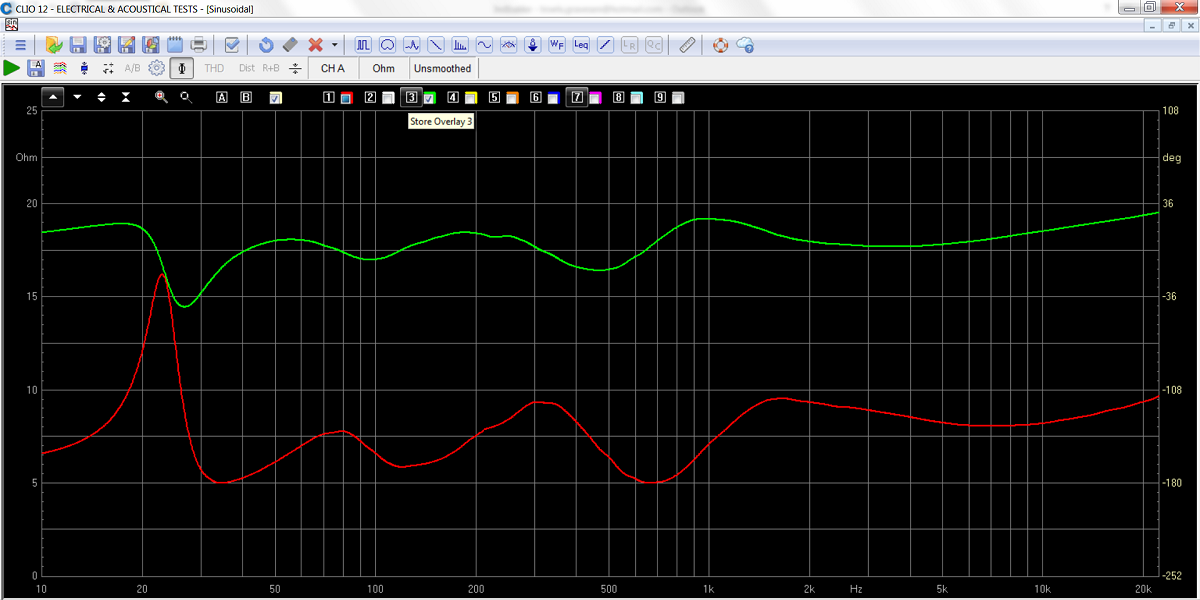
Final system impedance, red. Indeed a very easy load. Very much an 8 Ohm
speaker that never gets below 5 Ohms (35 and 700 Hz).
Green = electrical phase.
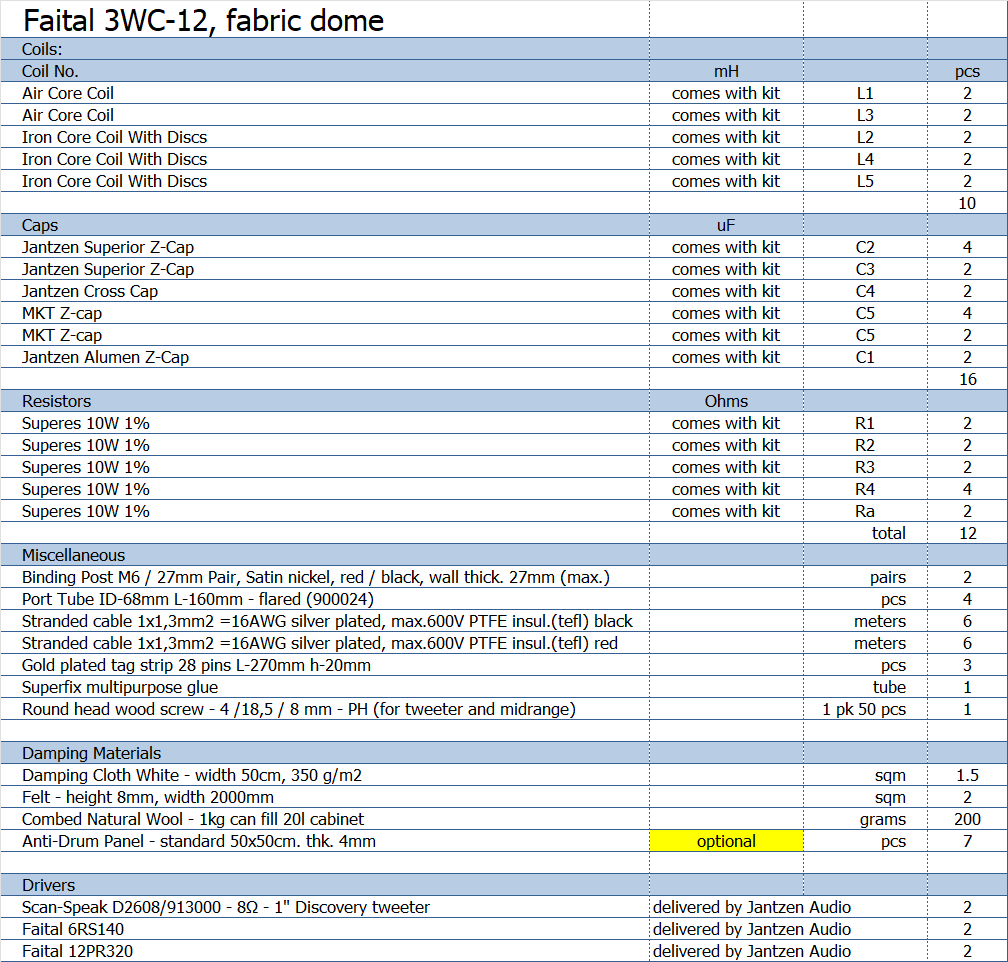
All kit and component prices may be subject to
change and are always to be confirmed by Jantzen Audio Denmark.
Kits can be ordered with/without drivers or some of the drivers.
Download Kit Sale Presentations:

All technical questions to troels.gravesen@hotmail.com
All questions regarding purchase of kits, please mail Jantzen Audio at contact@jantzen-audio.com
CROSSOVER-LAYOUT
BACK TO INDEX
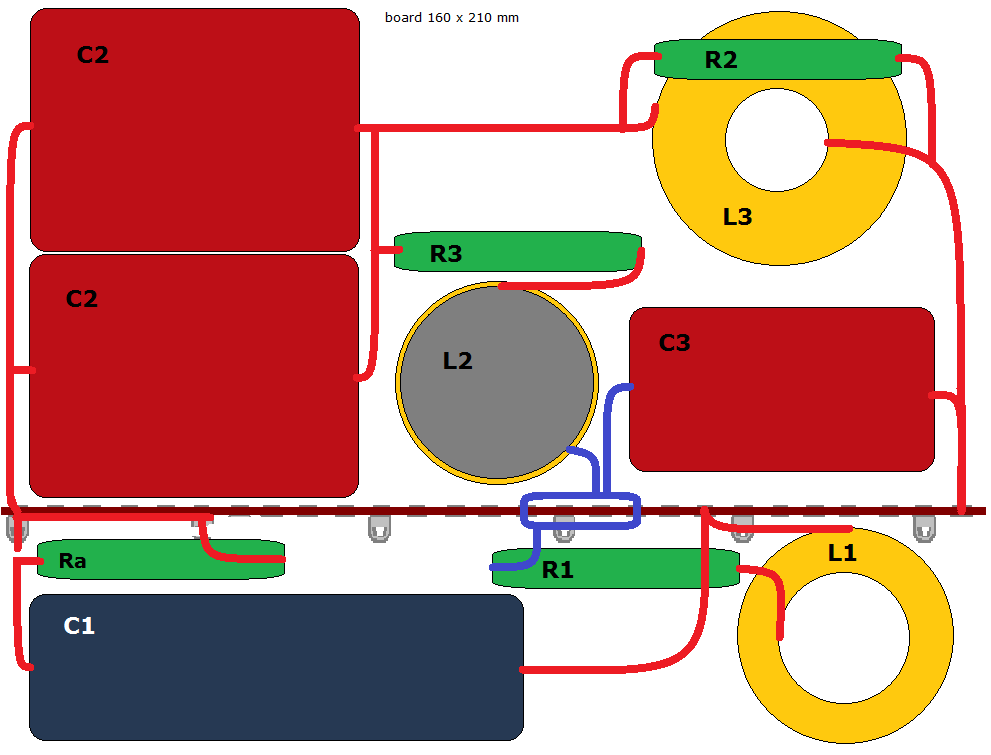
Crossover layout for mid-tweeter section.
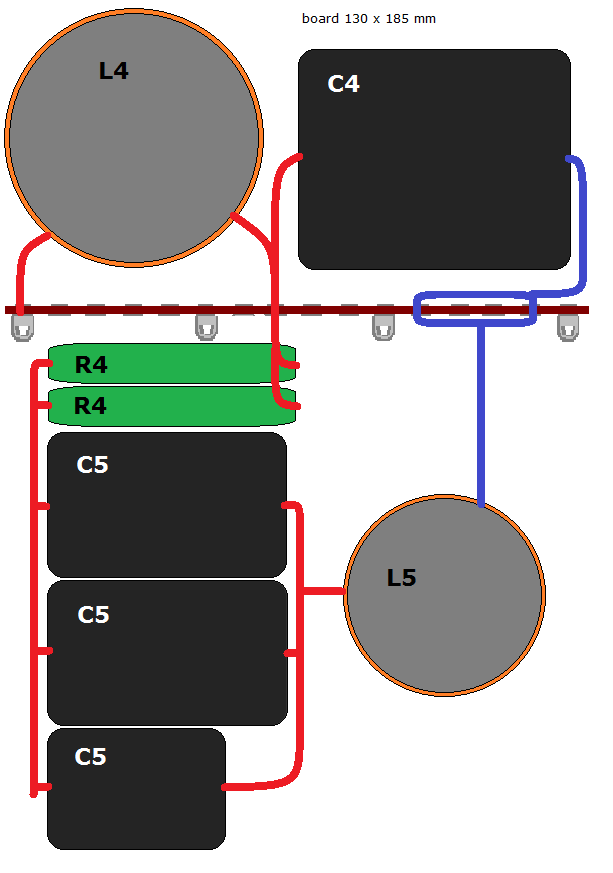
Crossover layout for bass driver.
Since introduktion, C5, Premium-ELKOs have been replaced by MKT-Z-Caps.
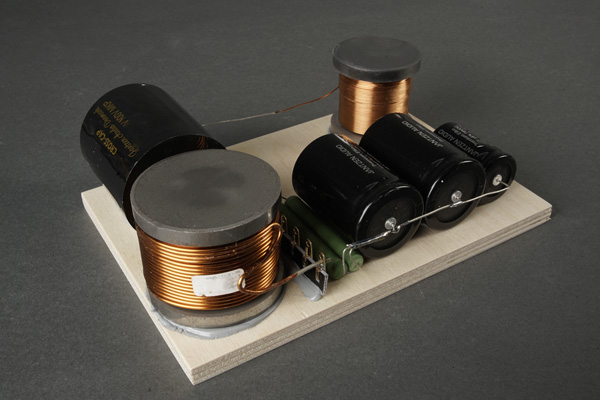
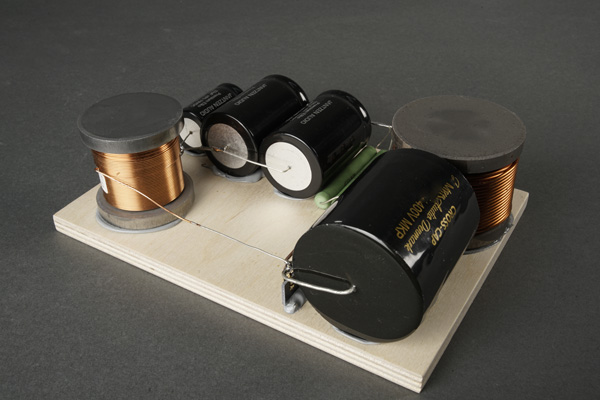
Click images to view large.
The PREMIUM-ELKOs have been discontinued
since I built the speakers and they are replaced by MKT-Z-Cap capacitors.
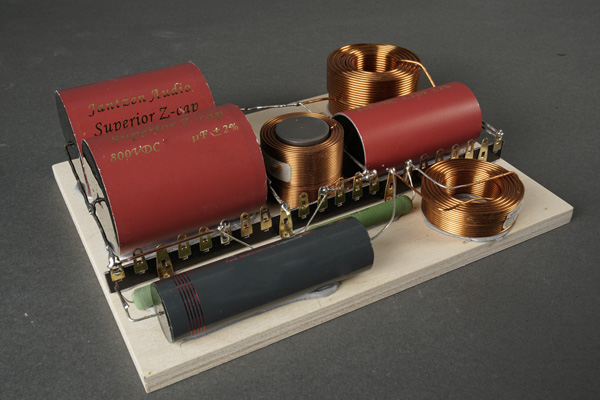
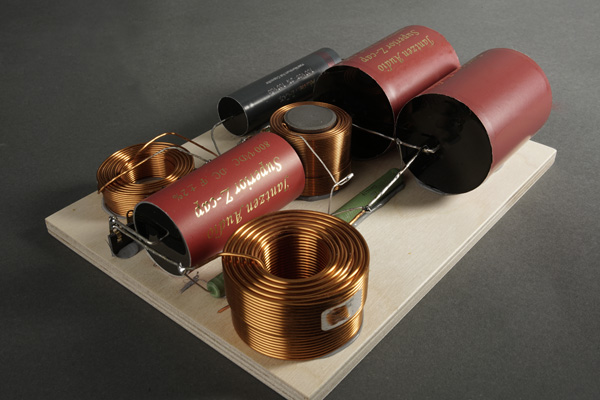
WIRING
BACK TO INDEX
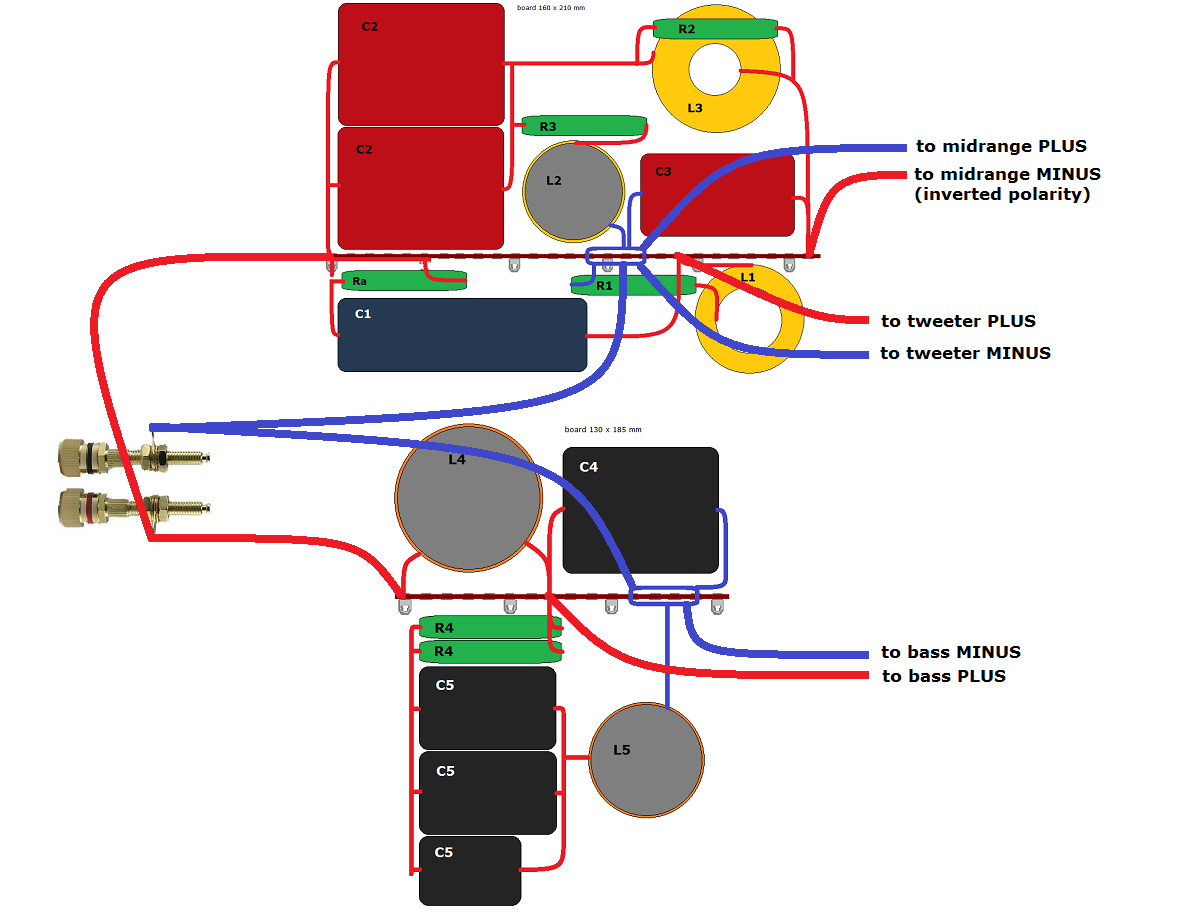
Please pay attention to midrange being connected with inverted polarity.
Minus goes to plus on the driver.
PLACEMENT OF CROSSOVER ON REAR PANEL BETWEEN BRACES

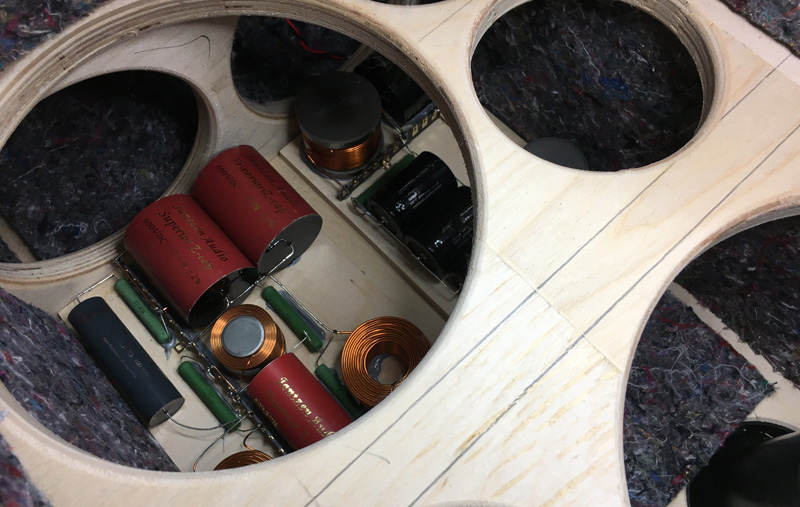
Trying out the crossover boards on rear panel before final wiring. Fits
very nicely!
Place as shown to get all coils as far apart from each other as
possible.

Crossover boards all wired up for mounting.
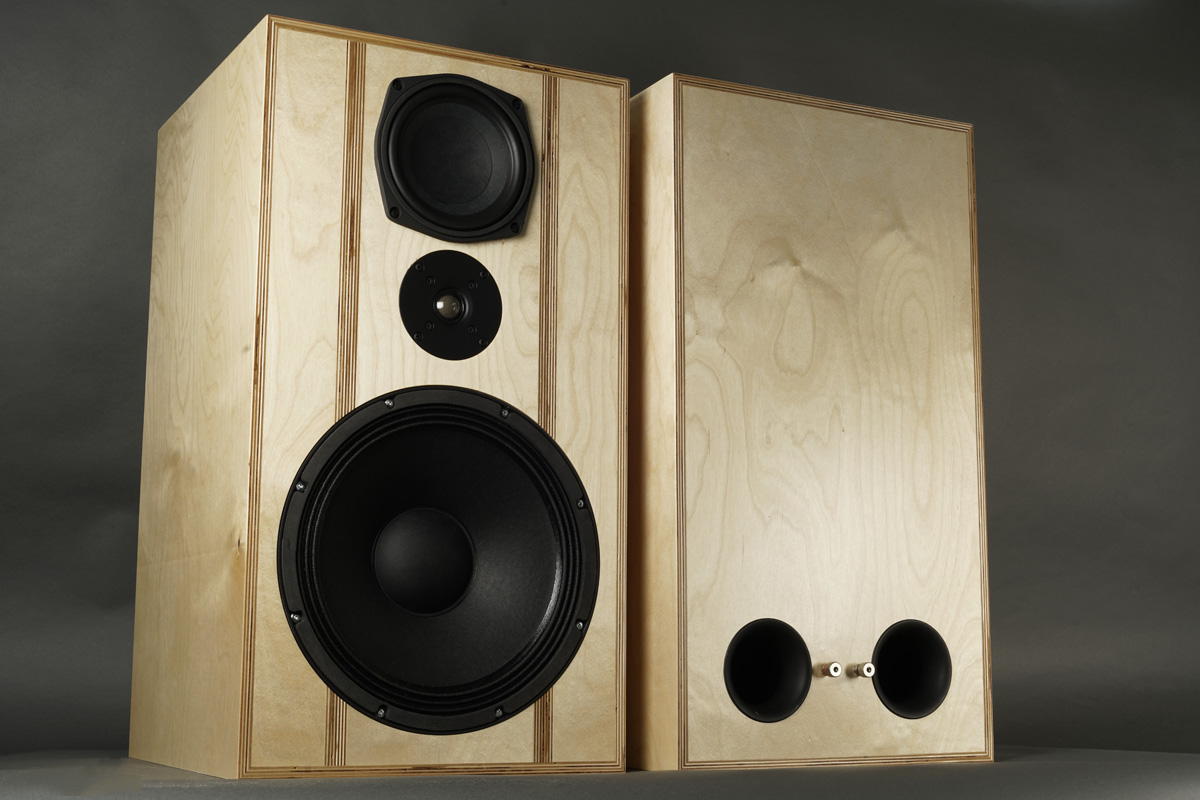
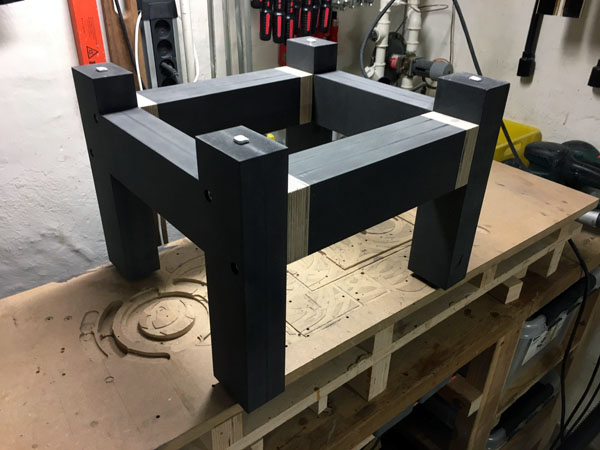
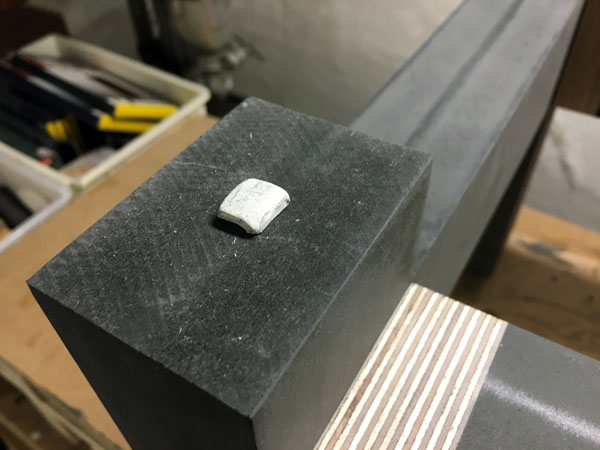
Finally got the stands made! The tedious part.
Made it from 25 mm black MDF, so quite heavy.
Added felt pads at bottom and "blocks" of blu tack - which is white on
these shores - on top against speaker.
Blu tack is a great way of securing cabinets properly to stands
and has some damping properties as well. Highly recommended.
When outer temperatures allows - moths from now - I'll take the stands outside and give them a
coat of black spray paint.
The reason for the BB inlays is that we can't use screws with MDF - it
splits. I used 6 x 80 mm screws to make it all stick together.
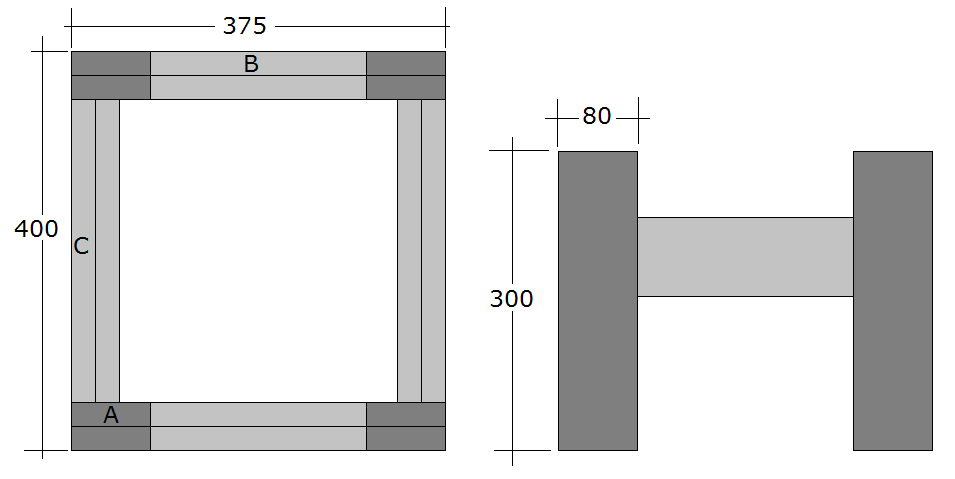
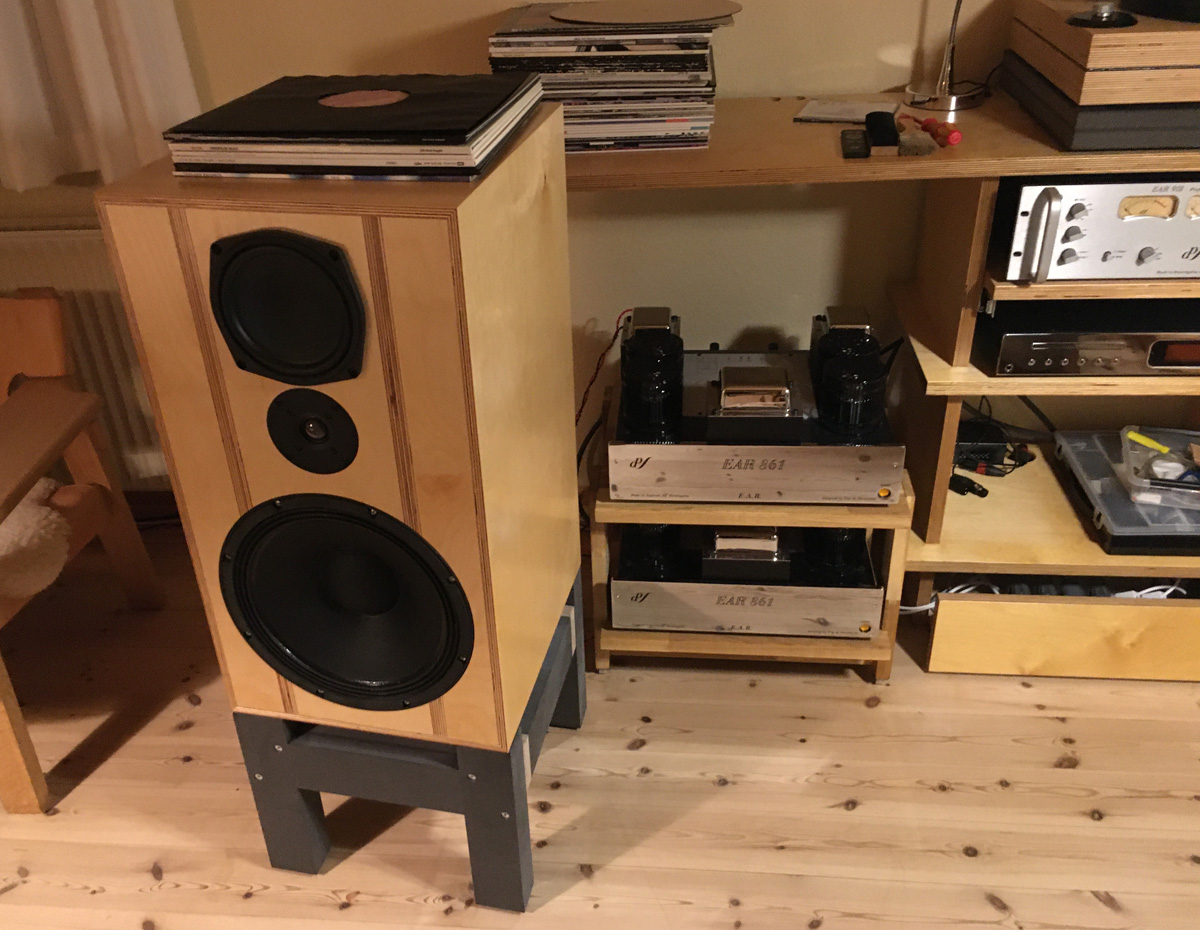
Nighttime set-up with my bridged EAR-861s running the speakers.
I've enjoyed the Faital 3WC so much I wanted to try more and having some
SBAcoustics SB29BAC-C000-4 tweeters on the shelf, these might be an
option. Looking at the drawing on the specs sheet, it appeared to a
plug'n-not-play substitute, meaning it fits the rebate for the ScanSpeak
D2608/913000 tweeter, but obviously takes a modified crossover. Given
its reasonable price point, this Be dome gives incredible value for
money.
The crossover makes a very smooth roll-off from an intrinsically flat
response of the Be dome, which by-the-way goes clean up to 30 kHz.
According to SBA even up to 40 kHz, but my microphone doesn't go this high.
I can't say more than I just very much enjoy the Be version - it stays
in.
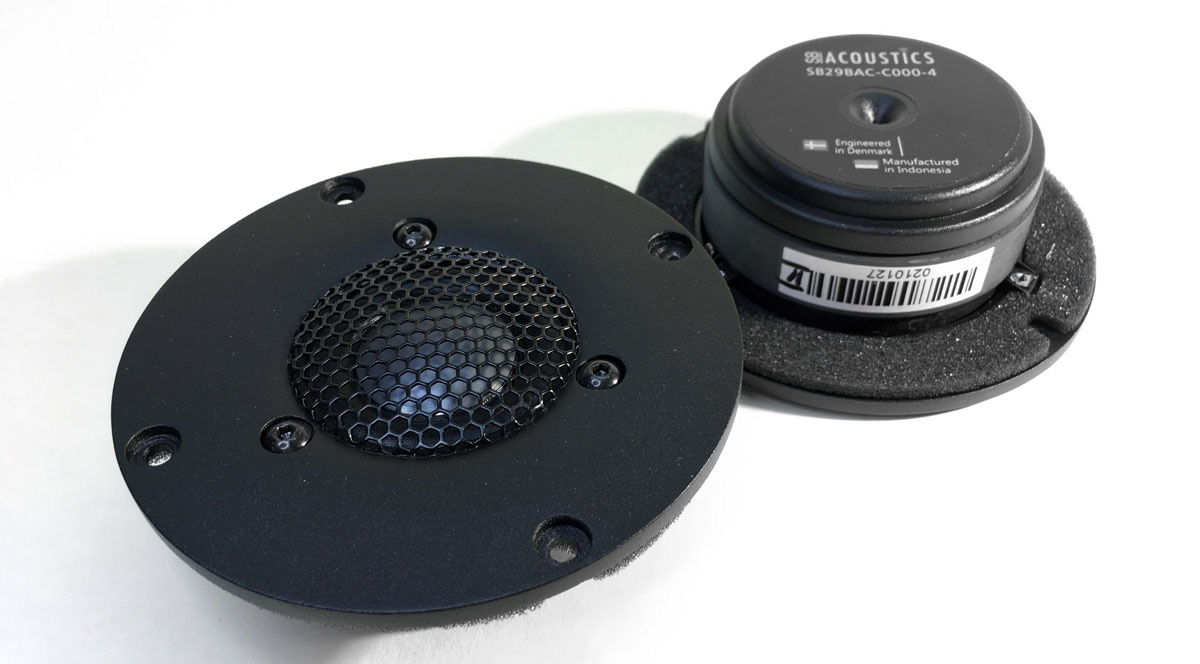
SB29BAC-C000-4 Beryllium dome tweeter.
Download specs
here.
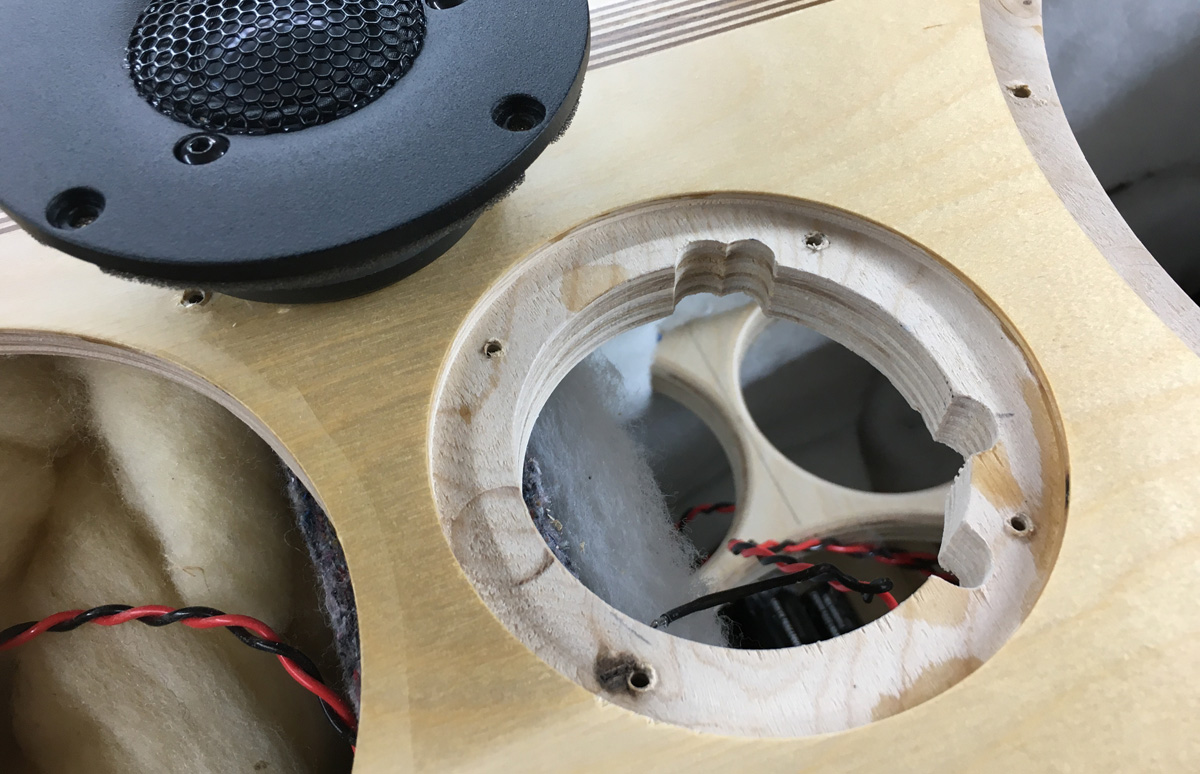
Well, the terminals of the BAC tweeter have a symmetrical position
contrary to the ScanSpeak tweeter, which has quite some weird
orientation of terminals.
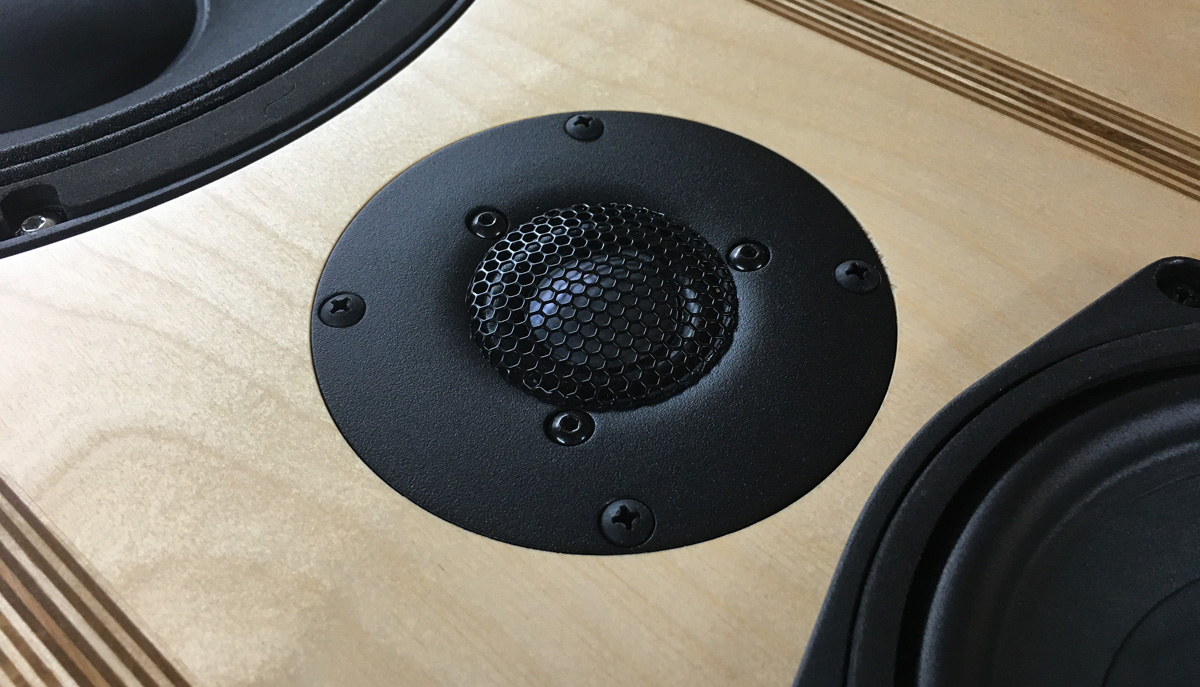
SBAcoustics, SB29BAC-C000-4 dome tweeter in place.
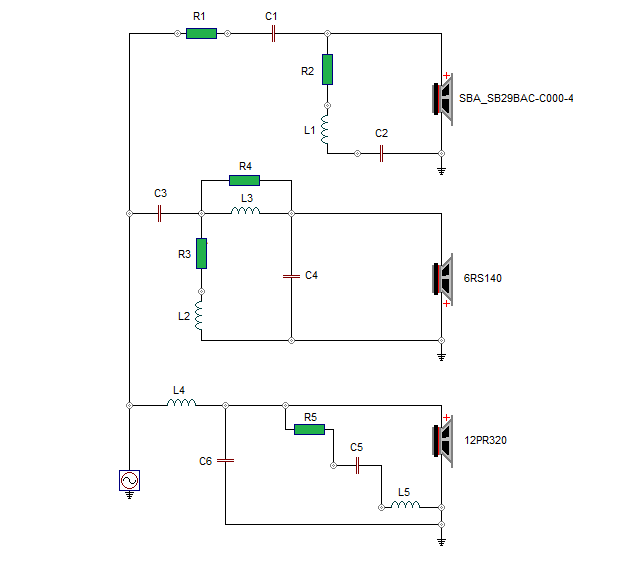
Only the tweeter crossover needs modification.
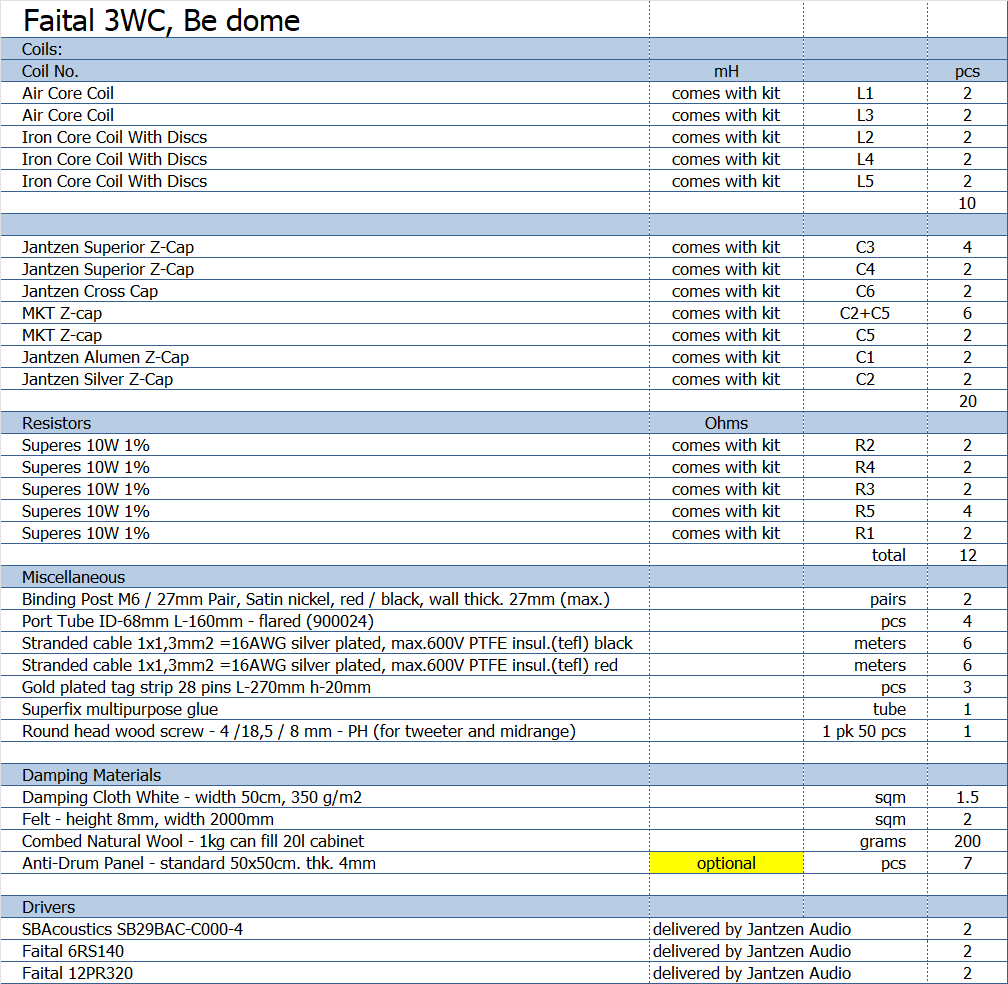
Parts list for Be version.
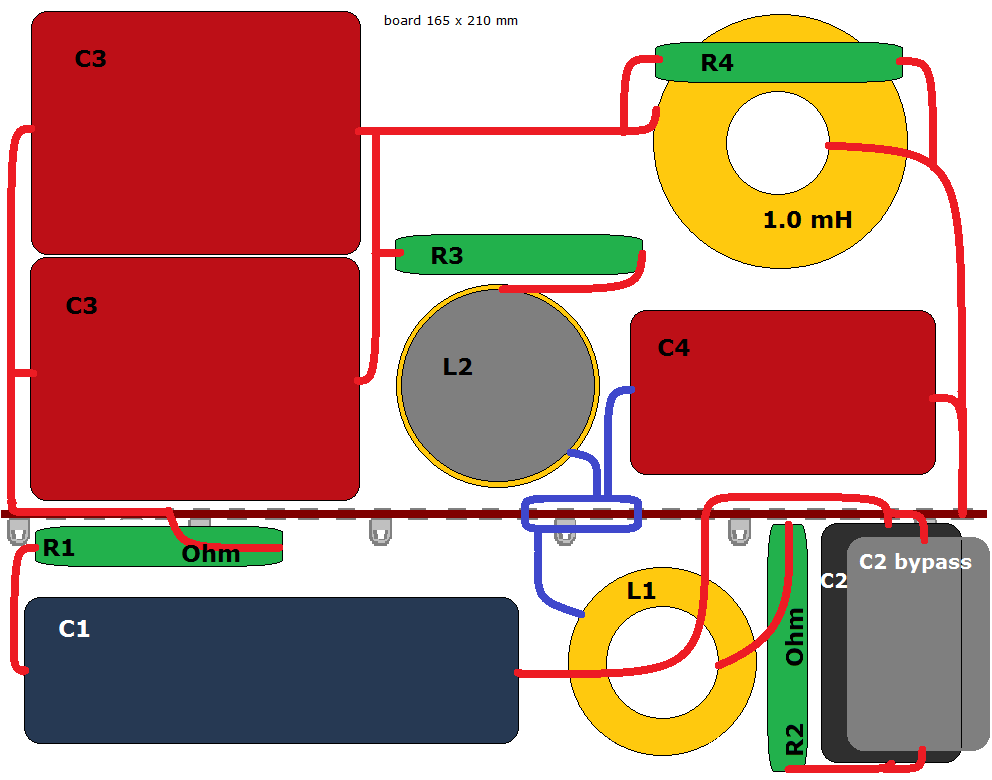
Mid-tweeter layout. C2 is a smooth-foil electrolytic by-passed with a
Silver-Z capacitor, basically smoothing the impedance peak, but by
choice of values also shapes the roll-off to produce a perfect LR2
profile.
Wiring is the same as for the ScanSpeak tweeter version.
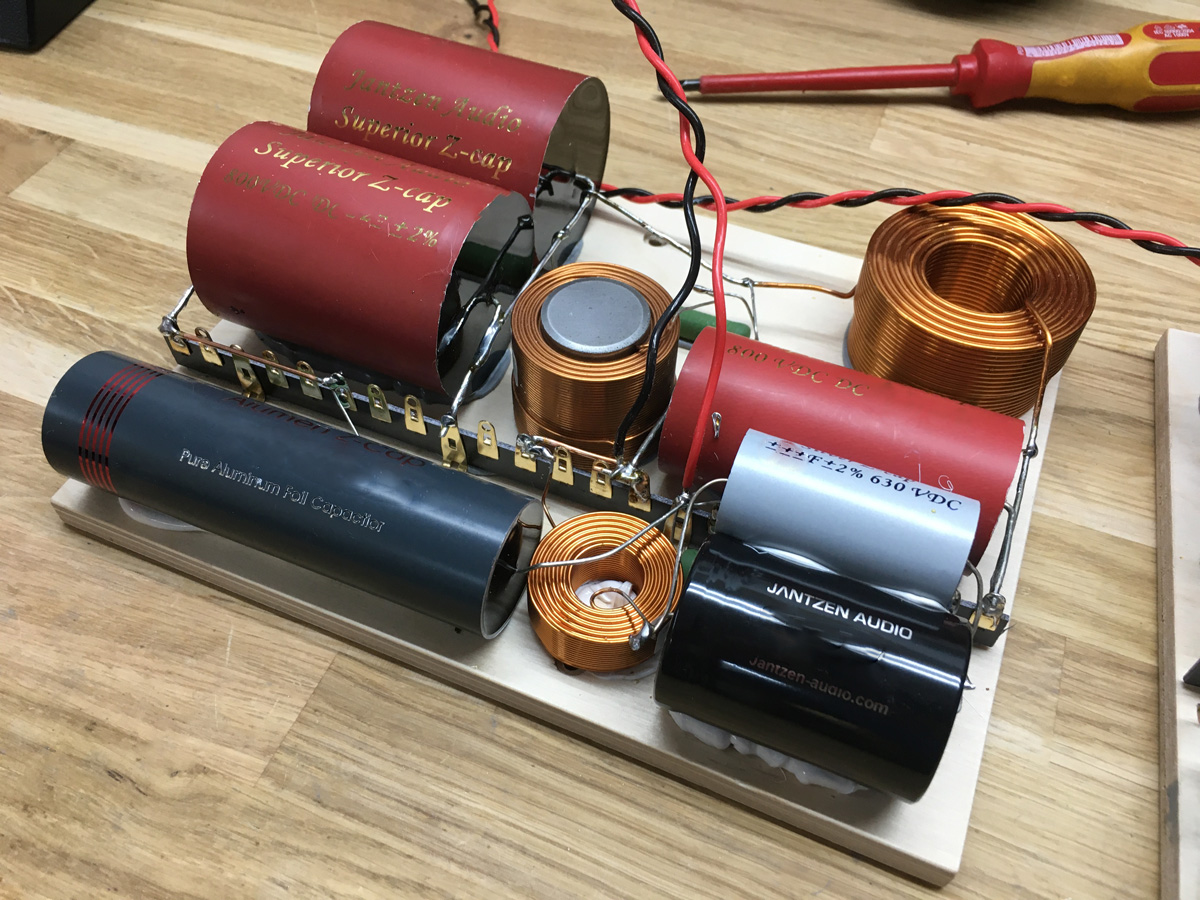
My layout a little different from the drawing as it had to fit the first
board.
All kit and component prices may be subject to
change and are always to be confirmed by Jantzen Audio Denmark.
Kits can be ordered with/without drivers or some of the drivers.
Download Complete Kit Sale Presentations:

All technical questions to troels.gravesen@hotmail.com
All questions regarding purchase of kits, please mail Jantzen Audio at contact@jantzen-audio.com
